This article was co-authored by Monica Morris. Monica Morris is an ACE (American Council on Exercise) Certified Personal Trainer based in the San Francisco Bay Area. With over 15 years of fitness training experience, Monica started her own physical training practice and gained her ACE Certification in 2017. Her workouts emphasize proper warm-ups, cool-downs, and stretching techniques.
There are 31 references cited in this article, which can be found at the bottom of the page.
This article has been viewed 28,437 times.
About 300 million people on earth suffer from asthma,[1] and many find that it makes exercise tough.[2] Some people even experience asthma mainly as a result of cardio exercise.[3] It’s important for asthma sufferers to exercise[4] to reduce the risk of heart disease and control weight,[5] but they must do so safely in order to prevent dangerous attacks. Regular cardio exercise can also help asthma sufferers reduce their symptoms.[6]
Steps
Preparing for Cardio Exercise
-
1Talk to your doctor. This may be the most important step you can take before doing cardio workouts if you suffer from asthma. Doctors can help you figure out which activities are best for your particular condition. They will also help you understand what to do if you have an asthma attack while you are exercising.
- If you’re planning to change your exercise routine, talk to your doctor. They might want to adjust your asthma medication accordingly.
-
2Keep a rescue inhaler with you whenever you exercise. Even if you’ve taken as many precautions as possible, there’s still a chance that you could have an asthma attack during cardio. Take a rescue inhaler with you any time you plan to work out. Talk to your doctor about how to use your rescue inhaler correctly.[7]Advertisement
-
3Check the weather report for asthma triggers. In particular, look out for high pollution days. If poor air quality tends to set off your asthma, stay indoors on those days. If you must exercise outdoors, reduce the amount of time you work out on days with high pollution. You might also want to wear a mask on those days.
-
4Look for indoor activities. For many asthma sufferers, the outdoors is full of triggers such as pollen and air pollution.[8] If you can find activities you enjoy indoors, these are usually the safest option. That doesn’t mean you can never exercise outside, just that you may have to be extra careful.
-
5
-
6
-
7Motivate yourself. People with asthma are often particularly reluctant to do cardio exercise because of the fear of an attack. If this is the case, find ways to motivate yourself to undertake cardio exercise.[15]
- Make yourself a calendar or sticker chart. Every day that you get in a bit of cardio (even if it’s only a little), add a check or sticker.
- Reward yourself. As soon as you meet a cardio goal, give yourself a treat. Maybe a new pair of tennis shoes or some fancy yoga pants to inspire you to work out more!
- Find a buddy. Having a friend to join you in a workout is often very motivating and more fun than exercising alone.
-
8Alert others about your risk of an asthma attack. If you’re on a sports team, be sure your coach and the other players know what to do if you have an attack. If you work out with a buddy, make sure they can also recognize the symptoms of an attack and help you if you get into trouble.[16] [17]
- If you have a medical ID bracelet, be sure to wear it when you’re doing cardio exercises. For competitive sports, alert referees and other officials who might be concerned about “jewelry” on the playing field ahead of time.
- Let your workout buddies, coach, or teammates know where to find your rescue inhaler and how to use it, in case you need help.
-
9Get workout advice from a trainer. If you work with a personal trainer or fitness coach, ask them for guidance about exercising at a safe level of intensity. If you have other health concerns, such as obesity, they can also offer advice on avoiding exercises that may compress or restrict your chest, such as sit-ups or face-down exercises.
Choosing Asthma-Friendly Exercises
-
1Exercise in moist, warm air if possible. Cold, dry air going into your lungs causes airway constriction. For this reason, cold weather sports such as skiing, ice skating, and ice hockey are often a problem, so talk to your doctor if you’re interested in these sports. Many people with asthma enjoy water-based sports such as:[18]
- lap swimming
- water polo
- synchronized swimming
- water aerobics
-
2Be careful when exercising in chlorinated pools. Exposure to excessive chlorine can trigger an asthma attack. Look for pools that use alternative or combination methods of sterilization, such as chlorine mixed with salinization or ozonation[19] . Avoid swimming in pools that give off harsh or noxious chemical smells.[20]
-
3Choose activities that require intermittent exertion. Activities that require you to run for long periods of time often aren’t the best idea for people with asthma. There are a variety of sports and activities that allow you to take a break frequently, such as:[21] [22] [23] Consider
- volleyball
- gymnastics
- baseball and softball
- football
- wrestling
- yoga
- golfing
- racquet sports
- cycling
- walking
- short distance running
-
4Use caution if you choose activities that require long periods of exertion. Activities like these are often a challenge for people with asthma, but that doesn't mean they're impossible. By following your doctor’s instructions, taking your medicine as directed, and warming up and cooling down properly, people with asthma CAN be successful at endurance sports, such as:[24] [25]
- soccer
- cross-country running
- basketball
- lacrosse
- field hockey
Exercising with Asthma
-
1Use your pre-exercise asthma medicine. Many people with asthma use an inhaler (often albuterol) before they work out.[26] If your doctor has prescribed a medicine like this for you,[27] be careful to use it as directed. If they haven’t prescribed something like this, check with them to see if you need one.
- Typically, you should use your pre-exercise medicine about 10 minutes before exerting yourself. Some require 15-20 minutes to kick in, so read the instructions carefully.
-
2Warm up. This is particularly important with exercise-induced asthma. You may need to show up to practice a few minutes early to fit this in if you’re on a sports team.[28] Researchers recommend 30 second sprints as an interval warm-up.[29] [30]
- Sprint as fast as you can for 30 seconds.
- Rest anywhere from 45 seconds to 5 minutes. Be sure you’re breathing normally before continuing.
- Repeat, doing a total of 8-10 sprints in all.
- Start exercising about 15-20 minutes after the interval warm-up.
-
3Focus on breathing steadily.[31] Work on breathing in through your nose and out through your mouth as you exercise. Try to keep your breaths as even as possible. You may want to practice steady, even breathing on a treadmill or during a brisk walk if you are anticipating trying a new sport. That will help you get used to breathing correctly before you jump into a baseball or volleyball game.
-
4Stop exercising if you don’t feel well. If you experience wheezing, chest tightness, coughing, or shortness of breath, take a break. If any of these symptoms become uncontrollable, follow the asthma plan you have developed with your doctor.[32]
-
5Use your rescue inhaler. If you find yourself experiencing symptoms such as wheezing, gasping, chest tightness, trouble speaking, or chest or stomach ache, stop exercising and use the inhaler immediately. If you find that your symptoms get worse, follow whatever asthma attack routine your doctor has advised.[33]
-
6Cool down. A good cool-down routine will help regulate your heart rate. Simply slow the pace of whatever exercise you’re doing for the last 5-10 minutes of your workout. Don’t shift gears and do a completely new kind of exercise; just make whatever you were already doing a bit simpler and slower.[34]
- If you were running, slow down to a jog for the last 5-10 minutes.
- If you were jogging, slow down to a walk for the last 5-10 minutes.
- Include some deep, regular breaths as part of your cool down.
-
7Be consistent and patient. The best way to build cardio stamina is to keep working at it over time. Try to get at least 20 minutes of cardio exercise 3 times a week. Don’t overdo it, but do keep working at it. Building cardiovascular strength takes time, and asthma can slow down this process. Do what you can until you become uncomfortable, and then try to do a little more the next day.[35]
Expert Q&A
-
QuestionShould I warm up before working out?
 Monica MorrisMonica Morris is an ACE (American Council on Exercise) Certified Personal Trainer based in the San Francisco Bay Area. With over 15 years of fitness training experience, Monica started her own physical training practice and gained her ACE Certification in 2017. Her workouts emphasize proper warm-ups, cool-downs, and stretching techniques.
Monica MorrisMonica Morris is an ACE (American Council on Exercise) Certified Personal Trainer based in the San Francisco Bay Area. With over 15 years of fitness training experience, Monica started her own physical training practice and gained her ACE Certification in 2017. Her workouts emphasize proper warm-ups, cool-downs, and stretching techniques.
ACE Certified Personal Trainer Yes! Start with some static stretches, which are stretches where you're targeting one muscle at a time. Then, work your way up to dynamic stretches where you're stretching your entire body. Your next goal is to get your heart rate up. Jumping jacks are a great way to do this, but you can also swing your arms from side-to-side while moving your torso. You should be a little bit out of breath by the time you start your workout.
Yes! Start with some static stretches, which are stretches where you're targeting one muscle at a time. Then, work your way up to dynamic stretches where you're stretching your entire body. Your next goal is to get your heart rate up. Jumping jacks are a great way to do this, but you can also swing your arms from side-to-side while moving your torso. You should be a little bit out of breath by the time you start your workout.
Warnings
- If you or someone else experience any of the symptoms of an asthma attack, call your local emergency services or report to an emergency room immediately. Symptoms include severe difficulty breathing, emitting a high-pitched whistling noise, tight neck and chest muscles, bluish lips, very pale skin, difficulty speaking, uncontrollable coughing, or trouble walking.[36]⧼thumbs_response⧽
References
- ↑ https://www.ncbi.nlm.nih.gov/pmc/articles/PMC6591438/
- ↑ https://getasthmahelp.org/asthma-exercise.aspx
- ↑ https://www.mayoclinic.org/diseases-conditions/exercise-induced-asthma/symptoms-causes/syc-20372300
- ↑ https://www.lung.org/lung-health-diseases/lung-disease-lookup/asthma/living-with-asthma/managing-asthma/asthma-and-exercise
- ↑ https://medlineplus.gov/howtopreventheartdisease.html
- ↑ https://thorax.bmj.com/content/70/8/732.abstract
- ↑ https://asthma.net/treatment/rescue-medications/
- ↑ https://www.cdc.gov/asthma/triggers.html
- ↑ https://allergyasthmanetwork.org/news/cold-air-asthma-in-winter/
- ↑ https://community.aafa.org/blog/cold-weather-advisory-people-with-asthma-should-take-precautions-to-avoid-symptoms
- ↑ https://health.clevelandclinic.org/7-tips-to-overcome-asthma-when-you-exercise/
- ↑ https://www.mdlinx.com/article/9-adverse-health-effects-of-too-much-exercise/70VZzE7JPAtHBOXq4O8Ltw
- ↑ https://www.mayoclinic.org/healthy-lifestyle/fitness/expert-answers/exercise/faq-20058494
- ↑ https://www.aafa.org/asthma/asthma-triggers/other-health-conditions/respiratory-infections/flu-influenza.aspx
- ↑ https://www.asthma.org.uk/advice/living-with-asthma/exercise-and-activities/
- ↑ https://www.asthma.org.uk/advice/living-with-asthma/exercise-and-activities/
- ↑ https://www.asthma.org.uk/advice/manage-your-asthma/action-plan/
- ↑ https://www.aaaai.org/conditions-and-treatments/library/asthma-library/asthma-and-exercise.aspx
- ↑ https://www.usgs.gov/special-topic/water-science-school/science/saline-water-and-salinity?qt-science_center_objects=0#qt-science_center_objects
- ↑ https://www.sussexswimming.org/assets/Guidance-for-pool-users-who-have-asthma.pdf
- ↑ https://kidshealth.org/en/teens/asthma-sports.html
- ↑ https://www.drmayankshukla.com/healthiest-sports-for-children-with-asthma/
- ↑ https://www.health.com/condition/asthma/14-best-and-worst-exercises-for-asthma
- ↑ https://www.health.com/condition/asthma/14-best-and-worst-exercises-for-asthma
- ↑ http://www.bluedevilhub.com/2012/12/26/health-all-choked-up-athletes-with-asthma/
- ↑ https://my.clevelandclinic.org/health/treatments/17575-bronchodilators--asthma
- ↑ https://www.mayoclinic.org/diseases-conditions/exercise-induced-asthma/diagnosis-treatment/drc-20372306
- ↑ Monica Morris. Certified Personal Trainer. Expert Interview. 18 November 2019.
- ↑ http://www.ncbi.nlm.nih.gov/pubmed/21811185
- ↑ http://sdogra.com/2012/06/18/proper-warm-up-prevent-exercise-induced-asthma-symptoms/
- ↑ https://www.mayoclinic.org/diseases-conditions/exercise-induced-asthma/diagnosis-treatment/drc-20372306
- ↑ https://www.asthma.org.uk/advice/living-with-asthma/exercise-and-activities/
- ↑ https://www.asthma.org.uk/advice/living-with-asthma/exercise-and-activities/
- ↑ http://www.mayoclinic.org/healthy-lifestyle/fitness/in-depth/exercise/art-20045517?pg=2
- ↑ https://www.ucdenver.edu/docs/librariesprovider65/clinical-services/sports-medicine/training-for-cardiovascular-fitness.pdf?sfvrsn=a0345bb9_2
- ↑ https://www.nhs.uk/conditions/asthma/symptoms/
About This Article
To build cardio stamina when you have asthma, try swimming or water aerobics, since the moist, warm air will open your airways. Alternatively, pick activities with frequent breaks, like baseball, yoga, cycling, or short distance running. Make sure to check with your doctor before starting any new exercise routine, and see if your medications need to be adjusted. You should also keep a rescue inhaler with you when exercising in case you have difficulty catching your breath. Additionally, check the weather for asthma triggers, like high pollution or high pollen, if you exercise outdoors. For more advice from our Fitness co-author, including how to use pre-exercise asthma medicine, keep reading!

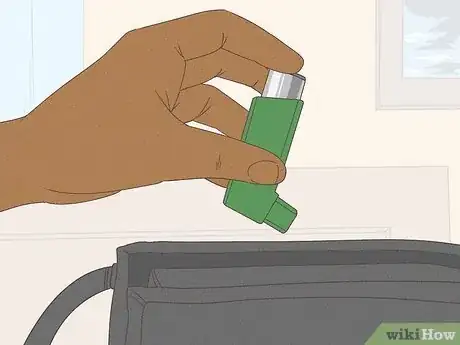
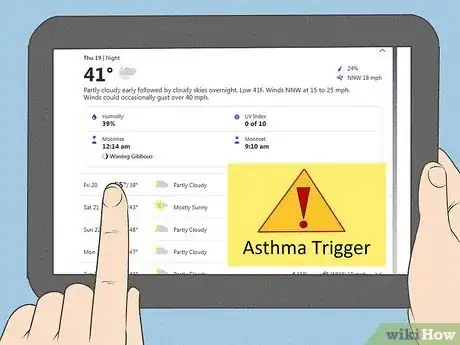
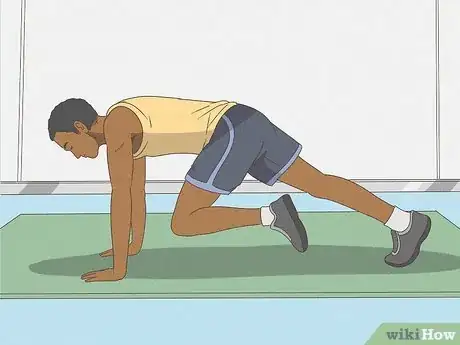


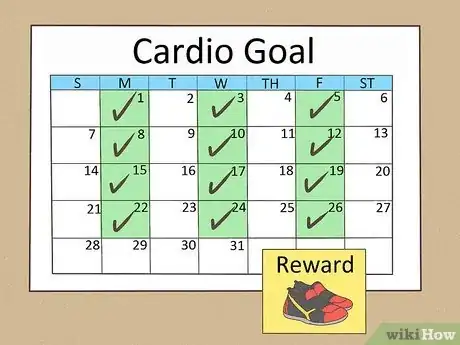




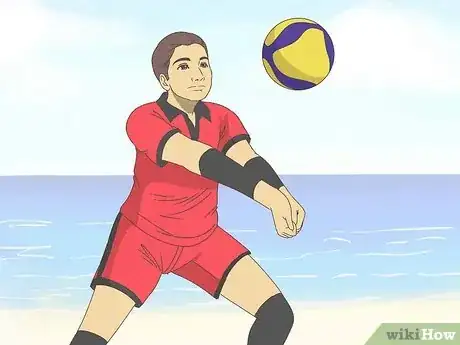
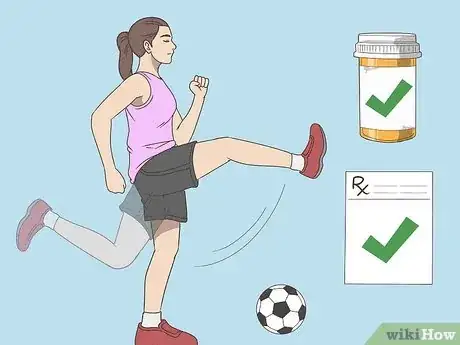
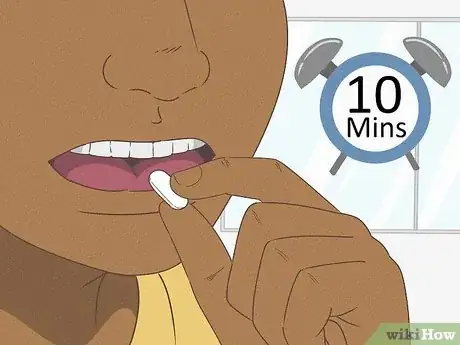
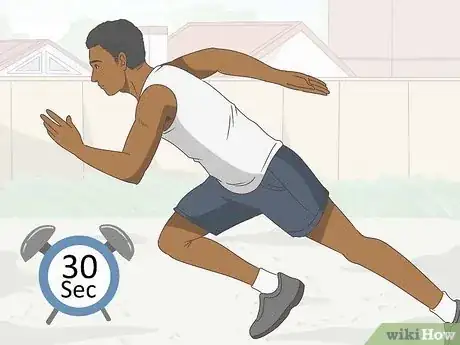



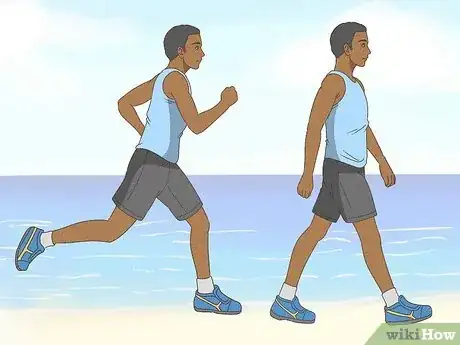
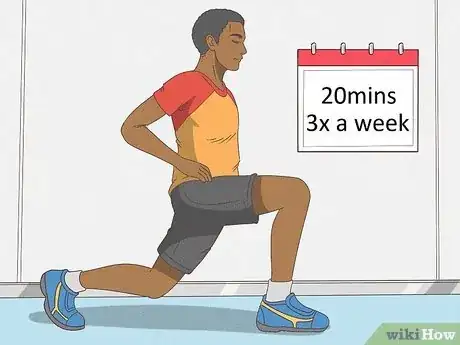









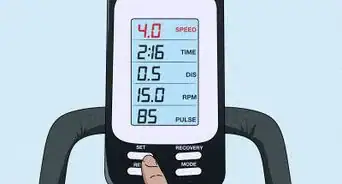










































Medical Disclaimer
The content of this article is not intended to be a substitute for professional medical advice, examination, diagnosis, or treatment. You should always contact your doctor or other qualified healthcare professional before starting, changing, or stopping any kind of health treatment.
Read More...